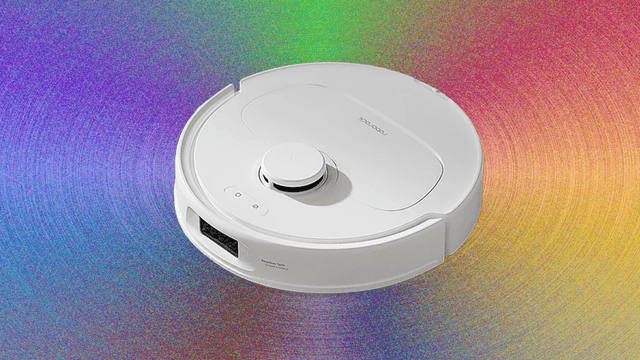The Best Robot Lawn Mowers
All products featured on WIRED are independently selected by our editors. However, we may receive compensation from retailers and/or from purchases of products through these links. Learn more.
Featured in this article
Who wants to be mowing the lawn when you could be lollygagging in a hammock with a cold drink, watching a robot mower do it for you? That’s right: No one does. Lawn care is a monotonous, thankless task. Robot lawn mowers were once the preserve of the wealthy, and they can still be on the pricey side, but they’re getting cheaper and better all the time.
I’ve been testing a handful of the best robot lawn mowers over the last couple of years. As the mowing season draws to a close, I've finalized some recommendations, honorable mentions, and robot mowers you should avoid. I also have some helpful information on what you need to know about these robots in this guide; feel free to let us know your burning questions or thoughts in our comments section on anything we didn’t cover.
For more robot assistance, don't forget to read our Best Robot Vacuums guide.
How Do Robot Lawn Mowers Work?
Perhaps counterintuitively, the setup instructions for your robot lawn mower will likely tell you to start by cutting the grass. Robot mowers mostly can’t deal with long grass. Unlike traditional mowers, these robots don’t collect grass cuttings; they mulch instead, and they are designed to cut frequently, keeping your lawn short and simply leaving the cuttings on the ground, which can also improve lawn health. Most robot mowers are designed to run two or three times a week during the growing season (from late spring to early fall).
They have rechargeable batteries onboard and can last from half an hour to several hours on a full charge. They return to the charging base and recharge automatically when they get low on power. Most mowers have simple controls, a small display, and an emergency stop button. You can generally start and stop mowing, set schedules, and create or edit mapped areas using the onboard controls or the companion mobile app, very much like a robot vacuum.
What Features Should I Look for in a Robot Mower?
There are many robot mower features to consider, and the best choice for you depends on what your yard is like.
Robot lawn mowers are generally rated to cover a specific square footage, with wider coverage requiring models with larger batteries. You should also consider the shape and topography of your lawn, as most robot mowers will struggle with steep inclines. While you can often map out separate areas so your robot mower can mow front and back lawns, for example, it will generally need you to lift and carry it between those areas.
There are a few types of navigation for robot mowers. We’ve tested four different approaches:
- Satellite: These mowers need a satellite signal to navigate and will have a receiver that must be placed in the open with a clear line of sight to the sky. Satellite navigation mowers are not suitable for areas with tall trees or buildings.
- Cameras: These mowers have cameras and onboard AI for obstacle detection and avoidance. They can automatically map areas and cut the grass in much the same way as most robot vacuums navigate around your home and clean your floors.
- Wire boundary: These mowers require you to fit a wire as a boundary around your lawn that marks out the border the mower should not cross.
- Remote control: These mowers allow you to remotely mow your lawn from the comfort of your home using a remote controller or an app on your phone. Some only work via remote control, while others can also cut automatically.
Robot mowers generally come with large charging docks, and you’ll need to earmark a suitable spot for yours. They usually have extensive weatherproof cabling, but you will have to find a route to an outdoor socket.
To connect to your mower and schedule a mow, update the firmware, or remote control it where supported, you need a decent Wi-Fi signal or a Bluetooth connection. It’s best to set up your mower’s charging station within range of your Wi-Fi network. If you want to connect your phone via Bluetooth, you will have to get quite close.
How Noisy Are Robot Mowers?
Most robot mowers are far quieter than their traditional counterparts, and you can expect them to operate at around 55 decibels, though they may go as high as 75 decibels. We only tested battery-powered mowers, but expect gas mowers to be louder. While the operation is often quiet, I did find that several mowers made annoying beeping sounds when backing up or had a loud recorded voice during setup or upon receiving a command.
Other Robot Lawn Mowers We Like
Eufy Robot Lawn Mower E15 for $1,400: This is another wire-free mower, but instead of relying on satellite navigation, it has a camera system capable of automatically mapping lawns and avoiding any obstacles. It can cover up to 0.2 acres (8,700 square feet), cut from 1 to 3 inches, and handle up to 18-degree slopes. It is also fairly quiet and has GPS tracking, but you must have Wi-Fi coverage in your backyard, or you'll need a 4G data subscription. We found the setup to be lengthy, due to a firmware download, but the mapping and the first cut were decent. We're going to need a little longer to put the E15 through its paces, so it only gets an honorable mention for now, but we are still testing.
Avoid These Mowers
EcoFlow Blade for £1,849: While it was easy to set up and cut my lawn nicely without the need for any boundary wire, the EcoFlow Blade (6/10, WIRED Review) sometimes struggled with GPS navigation and ended up stuck in a flower bed. It also left an unmowed strip around the edge of my lawn. The object avoidance was solid, and it can be automated in the app, though it occasionally failed to start a scheduled cut for me. EcoFlow seems to have discontinued this model, though it is still on sale in Europe. Probably best to avoid.
Yardcare E400 for $380: Curious about the budget end of the robot mower market, I agreed to try the Yardcare E400, but this mower was an unmitigated disaster from start to finish. It’s a boundary wire model, so you must run wire around the area you want mowed. Yardcare suggests it can cover up to 4,300 square feet and cut to between 0.8 and 2.4 inches. The problem is that it gets stuck frequently and struggles to even get on and off its charging station reliably. After trying multiple fixes to no avail and going through customer support, I had to conclude that this model has a serious design flaw.
Do Robot Mowers Work in Any Weather?
Robot mowers and their charging stations usually have an IP rating and can cope with rain, but you should pack up and bring your mower indoors or into the garage during the winter months. Many robot mowers have some kind of rain sensor and will pause mowing when it gets too wet. Some mowers may need to be paused manually. The wheels can churn up your lawn and get caked in mud if mowers continue to labor in the rain, especially with larger and heavier models.
How Well Do Robot Mowers Cut?
Mowers of different sizes will have different cutting widths, denoting the width of the strip they are able to cut on each pass. Most also have floating cutting decks that enable you to choose the length of grass you want (perhaps 1 to 3 inches). Many robot mowers seem to struggle with cutting around the edges of a lawn, especially if there’s a wall or fence that prevents them from getting close enough.
It’s common to find an uncut verge around the edge of your lawn, so you might need to occasionally get the string trimmer out. Every robot mower I’ve tested has also struggled to cut the area around the charging station, so I recommend placing it on a deck or paving if possible.
Can I Install a Robot Mower Myself?
Yes, most robot mowers can be installed by anyone, but you might want to set aside an afternoon to work out any snags. Finding the best spot for the receiver for a satellite mower can be tricky. The mapping process can also take a while; usually, it prompts you to remote-control your mower around the border you want to set. After the first mow, you should review its performance and make tweaks to ensure it’s covering the entire area you want to cut.
How We Test Robot Lawn Mowers
We test each robot lawn mower for at least a month, assessing the ease of setup, the mapping process, automatic scheduling (where available), navigation, obstacle avoidance, and the quality of the final cut, looking at length, uniformity, and watching out for missed patches. Where applicable, we try extra features, tweak settings in the app, and check how the mower handles different weather conditions. We also keep an eye on battery performance and charging time to ensure it aligns with the manufacturer's claims.
Power up with unlimited access to WIRED. Get best-in-class reporting and exclusive subscriber content that's too important to ignore. Subscribe Today.
































